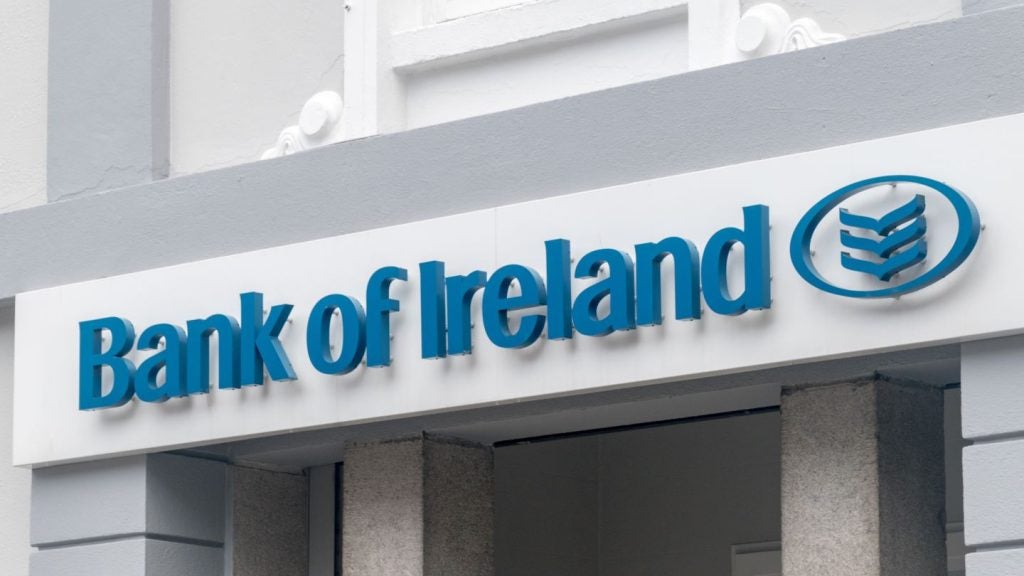
The Belgian lease market has rebounded strongly over the last 12 months. While lessors cannot fully explain the factors behind this expansion, or why some sectors are experiencing decline, they are confident that growth can be sustained as the economy recovers. Paul Golden reports.
In March, the IMF’s executive board observed that the economic recovery in Belgium is expected to continue at a modest pace in the near term, driven primarily by private consumption and supported by continued low energy prices.
However, the IMF also notes that the country faces considerable downside risks, including from the slowdown in emerging markets, financial volatility and geopolitical stress.
In its first year in office, the new government has taken a number of steps to promote competitiveness, job creation and fiscal sustainability. Key reforms enacted include pension reforms, a suspension of wage indexation and a ‘tax shift’ designed to reduce the percentage of taxation accounted for by the labour market.
The state reform has brought a further devolution of responsibilities, greater tax autonomy for the regions and a gradual rollout of a revised funding and transfer system.
Notwithstanding recent reform progress, major challenges continue to weigh on Belgium’s economic prospects, including high public debt and severe labour market fragmentation.
How well do you really know your competitors?
Access the most comprehensive Company Profiles on the market, powered by GlobalData. Save hours of research. Gain competitive edge.

Thank you!
Your download email will arrive shortly
Not ready to buy yet? Download a free sample
We are confident about the unique quality of our Company Profiles. However, we want you to make the most beneficial decision for your business, so we offer a free sample that you can download by submitting the below form
By GlobalDataFiscal gains made in previous decades have been reversed since the global financial crisis, and the public-debt-to-GDP ratio has returned to triple digits. The pace of consolidation since 2010 has been much slower than in other eurozone countries, as public spending continued to grow faster than GDP until recently.
With the deficit hovering at around 3% of GDP, fiscal sustainability is tenuous and sensitive to potential economic shocks, and while private employment is beginning to recover, there is entrenched high unemployment and inactivity among certain groups, including the young, the low-skilled and immigrants from outside the EU.
The IMF’s executive board directors commended the Belgian authorities for their recent reforms, including wage moderation, the tax shift away from labour, and pension reforms, which should support job creation and significantly reduce the projected increase in the economic cost of ageing.
Looking ahead, the IMF considers that high public debt and structural rigidities pose challenges to the outlook and that risks are tilted to the downside. In order to build buffers against future shocks, it is recommended that the focus should be to bring down public debt while nurturing the recovery and social cohesion. On the structural side, efforts are needed to address labour market fragmentation and further strengthen the financial sector.
There is widespread agreement that the Belgian government’s ambitious goal of reaching structural fiscal balance by 2018 will require substantial additional measures. To minimise the drag on growth, the IMF recommends fiscal consolidation should be primarily expenditure-based and underpinned by high-quality structural measures.
In particular, there is scope for making public spending more efficient, including through targeted reductions in public employment, enhanced means testing in social spending to better protect the most vulnerable, and improved budgetary control across all levels of government.
On the revenue side, the recommendation is for more efficient taxation of wealth and real estate, and phasing out of generous tax exemptions.
Addressing the severe labour market fragmentation through a comprehensive and inclusive jobs strategy is essential to boosting growth prospects and there is encouragement for further efforts to reduce the labour tax wedge for the low-skilled, improve education and training and strengthen incentives toward active labour market participation. These employment policies could be complemented by steps to remove barriers to geographic mobility, promote competition and reduce the administrative burden on companies.
The IMF is of the view that Belgium’s financial sector is generally healthy, and maintaining its soundness will be important to ensure resilience against shocks.
Banks’ business models should continue to adapt in the context of protracted low interest rates. Given strong growth in mortgage lending, there is a recommendation for vigilance and proactive supervision, including consideration of targeted prudential measures to limit overexposures of vulnerable borrowers.
Data from members of De Belgische Leasingvereniging (BLV), the Belgian leasing association, shows that total lease volumes in 2015 were 10.2% higher than for the previous 12-month period at €4.8bn.
Immovable or real estate leasing accounted for €615m of that total – an increase of 4.1% on the figure for 2014 – while the rest of the lease market was worth €4.2bn, up 11.1% on the total for 2014.
A look at the figures for the last decade shows that 2015 volumes reached their highest level since pre-global-financial-crisis 2008, when the leasing market was worth €4.85bn. Real estate leasing volumes last year were the highest for a decade – this segment of the market was worth €644m in 2005.
“In 2015, gross investment in fixed assets by companies showed a 2.4% increase,” explains Anne-Mie Ooghe, BLV secretary general.
“Since the increase of our members’ leasing production was strong last year, the penetration rate [the ratio of total leasing production to gross investment in fixed assets by companies] rose from 6.9% in 2014 to 7.5%.”
Equipment leasing penetration rose from 6% in 2014 to 6.5%, while the real estate leasing penetration rate was 1% – a figure that has remained relatively static over the last decade.
“As for the evolution of movable leasing in terms of type of equipment, the strongest increase was noted in the category of industrial machines and equipment (up 27.2% to its highest level since 2008), followed by passenger cars (which rose 23.7% to their highest ever volume), big-ticket items such as ships, aircraft and rolling stock (23.1%) and commercial vehicles, which rose by 3.5% to their highest ever level,” notes Ooghe.
Leasing of computers and business machines fell by 36.5% and after three years of considerable decline, renewable energy leasing recorded a more modest fall of 2.9%.
Machinery and industrial equipment increased its share of the overall leasing market to 35%, while passenger cars also accounted for a growing share of lease business (30.9%). Computers and business machines now account for barely 10% of overall lease volumes.
“As for the customer categories, leasing production for the services sector reached the highest level of increase (+ 14.3%), while the increase in the industrial and agricultural sectors respectively amounted to 6.2% and 3.4%,” says Ooghe. “By contrast, leasing for public authorities went down by 4.4%.”
The services sector now accounts for 63.5% of leasing volume in Belgium, with industry representing 29.6%. The public sector’s share of lease activity was at its lowest level for a decade.
The breakdown of the number of new contracts on the basis of their size shows a strong increase in the share taken up by contracts for amounts ranging from €20,000 to €50,000 (from 33.4% in 2014 to 38% in 2015). By contrast, the share taken up by new contracts for an amount of less than €20,000 fell from 46.3% to 44.4% last year.
The percentage of contracts the amount of which varied between €50,000 and €100,000 dropped from 13.3% to 11.3%.
The share of contracts for an amount ranging from €100,000 up to €1m was 6%, whereas that of contracts for amounts of more than €1m amounted to 0.3%.
There were 90,400 outstanding contracts at the end of last year, of which the most common term was up to five years (71%).
“The share of financial leasing in total leasing volume last year was 64.3%,” notes Ooghe. “At the end of 2015, the amount outstanding of movable and immovable leasing was 3.9% higher than the year before and amounted to €13.5bn.”
Thierry Veillet-Lavallee, managing director BNP Paribas Leasing Solutions Belgium describes the Belgian leasing market as buoyant over the first six months of 2016, reflecting the trend across Benelux.
However, he admits that the factors behind this healthy performance are difficult to assess before referring to the dominance of bank-owned lenders as one of the key features of the Belgian lease market.
“It is possible that leasing is grabbing market share from traditional lending business,” says Veillet-Lavallee.
“One of the features of the market in Belgium is that the four leading banks (which include BNP Paribas) account for approximately 75% of leasing volumes and leasing is promoted as a secure financing option.”
The challenge for banks in Belgium is that bank leasing business is performing better than vendor leasing, but offers a different business model with lower margins. Additionally, vendor leasing is most commonly used for office equipment and IT leasing, sectors that are showing weak performance.
Veillet-Lavallee acknowledges that the poor performance of the IT leasing market in Belgium is hard to explain.
“We know that demand for office equipment leasing is falling across the world, which is a concern for vendor leasing where office equipment accounts for a significant part of this business. However, IT leasing is not experiencing a decline across other parts of the world.”
BNP Paribas promotes leasing in Belgium across its bank network, and Veillet-Lavallee says its business is growing at a rate in excess of overall growth in the leasing market.
“For vendor lease programmes we rely on agreements made with the parent bank in France – we rarely sign deals in Belgium.”
While figures for the third quarter of 2016 are not yet available, Veillet-Lavallee says the strong performance of the first six months was sustained through July and August, which are traditionally slow months for leasing activity, which encourages him to believe that growth can be sustained through the remainder of the year.
“It is not unrealistic to expect the market to grow by 20-25% in 2016,” he says.
The Belgian lease market is mature. Financial lease is widely used – penetration of 12% of all business-related investments in fixed assets – and mainly focused on non-real estate, observes Patrick Beselaere, global head of ING Lease and a former CEO of ING Commercial Finance Belgium and ING Lease Belgium.
“Leasing is a true alternative to bank credit,” he explains. “We have sound players backed by banks or captives with few brokers active in the market. Most segments of the market are performing well, supported by a proactive offering on behalf of banks, which have made the product more popular over recent years.”
When asked to outline the most significant developments in the Belgian lease market over the last 12 months, Beselaere refers to a shift from traditional bank lending to leasing (asset-based lending) in combination with a take up of business investments as the economy has recovered.
“The market share breakdown between bank-owned, independent and manufacturer-owned lessors has not changed in recent years,” he adds.
“More than 80% of the financial lease market is controlled by bank-related lessors, of which 75% is realised by the four largest banks. The operating car lease market has been stable, with a slight increase in the dominance of bank-related lessors.”
Beselaere expresses optimism about the prospects for the Belgian lease market through the rest of this year and into 2017.
“The main growth driver is the health of the economy, but leaving aside this factor I expect leasing to grow in importance on account of its asset-based character and its added value compared to other forms of lending,” he concludes.







